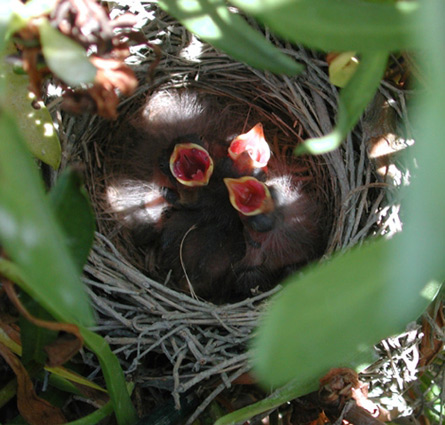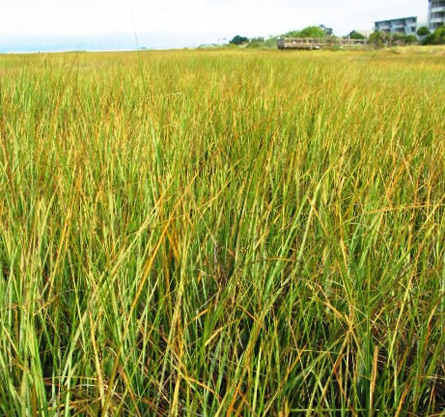Out-of-control grasses may lure song sparrows near San Francisco into bad real estate deals.


Dense stands of an invasive kind of cordgrass spreading through marshes may look like great new territory for Alameda song sparrows to nest. But the lush neighborhoods bring an extra risk of nest-drowning floods, says Cully Nordby of the University of California, Los Angeles.
The birds’ already slim chance of successfully raising chicks drop from 15 percent to about 10 for nests in alien cordgrass, Nordby says.
California has listed this subspecies of song sparrow, Melospiza melodia pusillula, as a species of special concern. Specialized for life along the edges of tidal marshes, the Alameda song sparrow lives only around San Francisco’s SouthBay.
Song sparrows choosing the new cordgrass suburbs lying lower in the marshes than their traditional homes do lose fewer nests to predators. But any advantage on that front disappears as floods in cordgrass wipe out about three times as many nests as in shrubbery elsewhere, Nordby and her colleagues report in an upcoming Biological Invasions.
Flood-prone cordgrass could be a new kind of what biologists call ecological traps, Nordby says. These traps come from environmental changes that turn a species’ normal, healthful urges into really bad ideas.
The cordgrass Spartina alterniflora arrived from the Atlantic and Gulf coasts during the 1970s. Before it could overrun the Pacific species, the two hybridized, and the offspring turned out to be a super cordgrass that overgrows both parent species.
Alameda song sparrows need dense tangles of plants to support cup-shaped nests and hide them from crows, raccoons and other predators. And the novel form of cordgrass could satisfy an animal looking for cover, Nordby says. The hybrid Spartina can grow 2 meters tall, creating a solid thicket that scientists and predators alike must wriggle or thrash through.
Nordby and her colleagues monitored nests in the tidal marshes to compare the fates of birds in the usual habitats with those in the exotic cordgrass.
“One of the tricky parts of doing this research was trying not to just blaze trails right to the nests,” Nordby says. Yet the invasive cordgrass grows closer to the fringe of the marshes than Alameda song sparrows normally nest, and it floods easily. (The Pacific cordgrass species grew near the marsh margins too, but it straggled along in such a loose formation that the birds hardly ever moved in.)
“I’ve seen eggs floating,” Nordby says. If they manage to settle back down into the nest, parents can take up incubating them again. If the eggs wash overboard, though, they’re doomed. “Even a matter of half an inch can make a difference,” Nordby says.
The grass looks like a problem, says Martin Schlaepfer of the State University of New York College of Environmental Science and Forestry in Syracuse. He says, though, that he’d like to learn more about the preferences of the birds for the new cordgrass versus the familiar nesting sites. In the strictest definition, a trap lures animals away from the old grounds instead of just providing an imperfect habitat.






